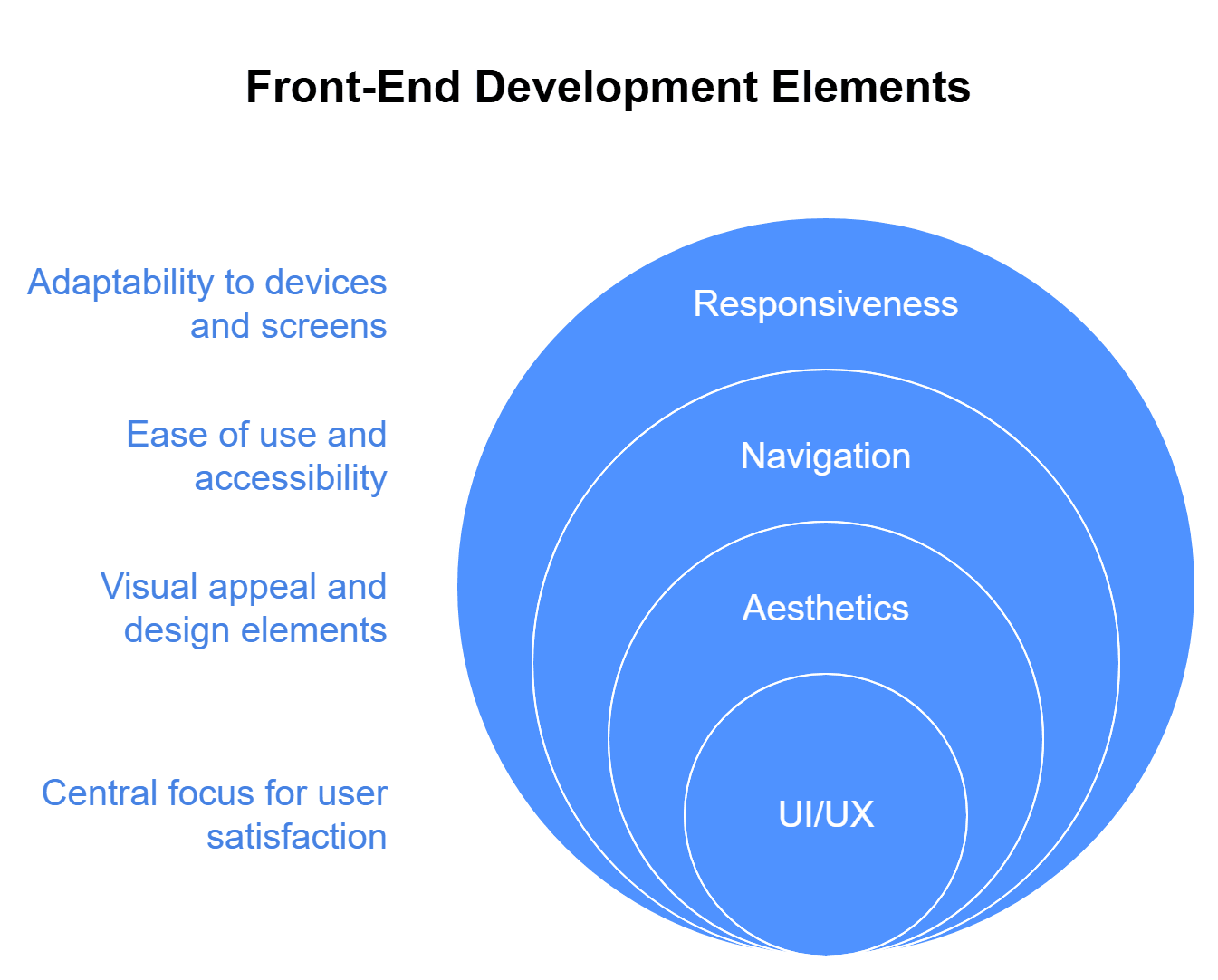Web Development Glossary Terms/Front-End Development
Front end development involves building the visible part of a website that users interact with. It includes the layout, design, and user interface behavior. Technologies like HTML, CSS, and JavaScript are used to create responsive and interactive experiences that work across screens and browsers.

The backbone of web content, HTML is used to structure and organize the content on the web pages. It defines elements such as headings, paragraphs, links, images, and other multimedia content.
CSS is used for styling HTML elements. It controls the layout, colors, fonts, spacing, and overall visual presentation of web pages. CSS also allows for responsive design, enabling websites to look good on various devices and screen sizes.
JavaScript is a dynamic programming language that adds interactivity and functionality to web pages. It allows developers to create features like form validation, dynamic content updates, animations, and event handling. Typically, JavaScript is essential for building modern web applications and enhancing user experience.
NOTE: Also, front-end developers often use various libraries and frameworks that are built on top of JavaScript, such as:
A JavaScript library developed by Facebook for building user interfaces, particularly single-page applications. It allows for the creation of reusable UI components and efficiently updates the UI when data changes.
A platform and framework for building client-side applications using HTML and TypeScript. Developed by Google, Angular is known for its powerful features and capabilities for building complex web applications.
A progressive JavaScript framework for building user interfaces. Vue is designed to be incrementally adoptable, meaning you can use it for small parts of a project or as a full-featured framework for larger applications.
A superset of JavaScript that adds static typing. TypeScript is often used in larger applications for better maintainability and type safety, especially in conjunction with frameworks like Angular and React.
Here's a table summarizing the key front-end frameworks along with their main features:
Here are some real examples where front-end development is essential:
Example Application: Company Website (e.g., a local business site)
Description: Building a new website from scratch to showcase services, contact info, and portfolio.
Example Application: Trello
Description: A project management tool that allows users to create boards, lists, and cards, all managed through a dynamic front-end interface.
Example Application: Figma
Description: A design tool that allows designers to create prototypes, which require front-end development to turn designs into functional web applications.
Example Application: Bootstrap
Description: A framework that helps developers create responsive websites that work on desktops, tablets, and smartphones.
Example Application: Airbnb
Description: Regular updates to improve navigation, booking processes, and visual appeal for users searching for accommodations.
Example Application: Gmail
Description: A web-based email service that loads a single page and dynamically updates content without refreshing the browser.
Example Application: Spotify Web Player
Description: The front-end communicates with back-end APIs to fetch music data, playlists, and user preferences.
Example Application: WordPress
Description: A popular CMS where front-end development is used to create themes and customize the appearance of websites.
Example Application: Amazon
Description: An online shopping platform that uses front-end development for product pages, shopping carts, and checkout processes.
Example Application: Notion
Description: An all-in-one workspace that started as an MVP, requiring front-end development to create a functional user interface for notes and tasks.
Example Application: Facebook
Description: Regular updates and feature rollouts require ongoing front-end development to ensure a seamless user experience.
Example Application: Wikipedia
Description: Continuous improvements to the front-end to enhance loading times and usability for millions of users accessing the site.